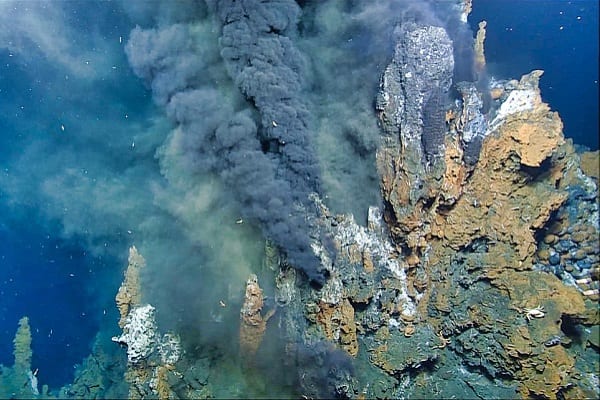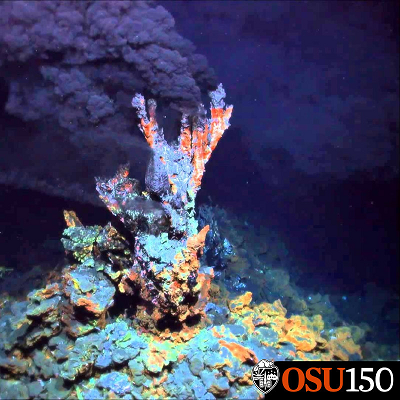Ancient life was in some hot water…but that’s a good thing
November 9, 2019
by Barbara Hogg
42 seems to no longer be the answer for everything. Hydrothermal vents are thought to hold the key to the origin of life.
A recent study published in Nature Ecology & Evolution shows that the conditions found in modern-day hydrothermal vents not only allow the formation of simple membranes but actively promote it.
Hydrothermal vents are found in the Earth’s crust around ocean ridges and volcanoes. They are one of the most extreme environments for life to survive on this planet.
The water can reach the temperature of molten steel, and the pressure is so high that hot water is incapable of turning to steam. Despite these conditions, these vents are thought to hold the secrets to how life began on our planet.
Why Look at the Hydrothermal Vents, the Most Inhospitable Environment, for Clues to How It All Began?
Although it may seem like these conditions are too extreme for life, they’re not, life thrives there today, and they can act as a pressure cooker for chemical reactions.
Hydrothermal vents have long been a consideration for the origin of life, but research showed that the combination of high temperatures, ionic concentrations, and high pH prevented the formation of hydrocarbon chains essential to life.
This study proves otherwise!

What Did the Results Show?
Hydrocarbon chains were shown to readily assemble simple cell membranes in the exact conditions that were thought to prevent it.
Membranes are one of the most fundamental components of life; they hold a cell together and protect it from its environment. It’s unknown what the first membranes were made of exactly, but it is suspected that they formed a simple bi-layer (double layer) of hydrocarbon molecules.
Hydrocarbons are incredibly versatile and can combine in numerous ways to create very different molecules. In hydrothermal conditions, the creation of fatty acids from the hydrocarbons is most favorable as these are more stable at high temperatures. Heat is essential for the formation of the simple membranes; it causes portions of the molecules to melt and be available for reaction.
The fatty acid is not only more reliable in hot temperatures, but it is also more pH resistant. The inclusion of fatty acids allowed the molecules to withstand much higher pH levels. Highly alkaline conditions are needed to create more stable structures and for the molecules to self-assemble and enclose into a vesicle (fully sealed membrane).
Alkaline pH also prevents ions such as magnesium (Mg2+) and calcium (Ca2+) interfering with the creation of the bi-layer. They can attach themselves to the hydrocarbon chain and prevent the two layers from joining, meaning that the membrane will fall apart.
Another major issue that interferes with the creation of these simple cell membranes is the presence of salt. Previous research showed that low levels of salt could be beneficial and help the formation of vesicles; however at high levels it can interfere with this. Prehistoric oceans are theorized to have similar salt concentrations as the oceans today.

It is still too high to allow the formation of the vesicles. The study showed that with the combination of all of the above conditions, the current levels of salt didn’t stop the creation. Moreover, if they continued to increase it past current levels, the cysts would pull together, and some would even make 3-D structures.
What Does This Mean?
These results show that previous experiments investigating the origin of life in hydrothermal vents were incorrect. High temperatures, pH, salt, and ionic concentrations combined were thought to interfere with the formation of simple cell components.
However, this study shows that it is not only possible but is actively created. It could be how it all began, and how it could begin on other planets and moons.
Further Reading
Nature. Promotion of protocell self-assembly from mixed amphiphiles at the origin of life. [https://www.nature.com/articles/s41559-019-1015-y]
Photo Credits
Want more science now?
Check out our news page where we post interesting studies and discussions (sometimes mocking them mercilessly) for more.
